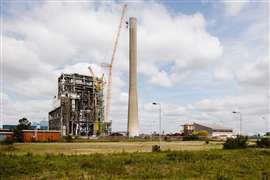The growing importance of the chief risk officer in construction
17 July 2023
 Image: sirisakboakaew via AdobeStock - stock.adobe.com
Image: sirisakboakaew via AdobeStock - stock.adobe.com
Risk management is now so critical to the survival of construction companies that a new trend of appointing a ‘chief risk officer’ has started to emerge.
That’s according to Clay Gilge, national lead, principal, infrastructure, capital projects, and climate advisory for KPMG US.
Gilge, who co-authored KPMG’s 2023 Global Construction Survey, told International Construction that hiring a dedicated chief risk officer to oversee risk management had become a key trend within the construction industry.
 Clay Gilge (Image: KPMG)
Clay Gilge (Image: KPMG)
The growing importance of risk management comes amid inflation, supply chain challenges, and a consequent wariness among contractors across the world of fixed-price contracts that leave them shouldering the bulk of the risk on projects.
Gilge said that KPMG’s survey had already been tracking an increased focus among contractors when it came to risk management and its evolving importance as a tactical function at a project level.
“But now what we’re seeing is the elevation of that to where you actually have chief risk officers and that risk is elevated to a point that it’s not just delegated, it’s something that a C-suite executive takes responsibility for,” he said.
He added that chief risk officers were looking at the issue of risk but just at a broad enterprise level, but also examining risk on specific projects that companies are involved in.
“It has been elevated to a point where you are embedding the risk management process and functions all the way across the business, so that you don’t have a major construction project have issues and risk that could bankrupt your entire organisation,” he said.
Productivity set to turn a corner
Meanwhile, Gilge predicted that construction was about to turn a corner when it came to productivity, having been sluggish for many years.
And he suggested that the increased adoption of technology could hold the key to that change.
“The adoption around technology used to be considered secondary. And now what you’re seeing is everyone’s really focused around it, knowing that this is a really key driver of our business.
“Some leading construction companies, like Suffolk Construction, almost consider themselves a technology company first and a construction company second. That’s a pretty revolutionary view,” he said.
Lagging productivity had been a consistent theme throughout the years that KPMG has been running its survey. But Gilge said he was “very optimistic” that there would start to be an advancement in productivity.
He said those gains could come in the form of modern methods of construction like modular building, or through more robotic process automation, which could assist onsite, physical construction.
“I think everyone recognises that the more bespoke manual labour you have taking place, the more costly it is.
“We also saw during covid that the companies that had invested in technology prior to the pandemic were in much better shape to continue to maintain productivity in their workforce. I think covid did allow them to see some of the light at the end of the tunnel [on productivity] and we’re going to continue to see more investment in that.”
To watch International Construction editor Andy Brown’s full interview with Clay Gilge, hit play on the video below.
To read KPMG’s 2023 Global Construction Survey, click here.
STAY CONNECTED


Receive the information you need when you need it through our world-leading magazines, newsletters and daily briefings.
CONNECT WITH THE TEAM










